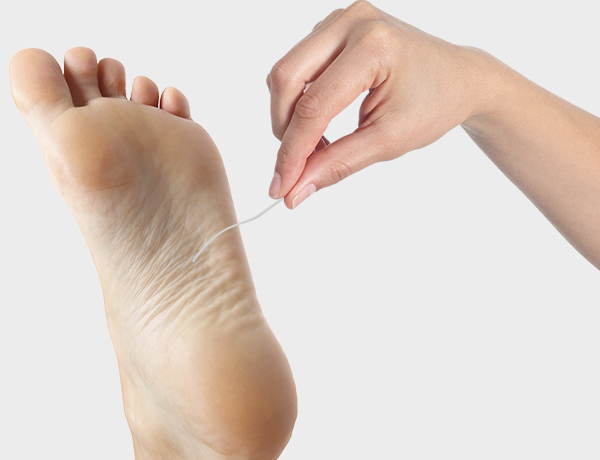 Welcome to the final installment in the Treat Your Feet series for diabetes foot health. In past weeks, we’ve learned to keep feet Clean, make sure to Cover them with appropriate footwear, and periodically Circulate to maintain blood flow. Our last topic is the foot Check, a visual and physical review that can help identify problems early, before they progress.
Welcome to the final installment in the Treat Your Feet series for diabetes foot health. In past weeks, we’ve learned to keep feet Clean, make sure to Cover them with appropriate footwear, and periodically Circulate to maintain blood flow. Our last topic is the foot Check, a visual and physical review that can help identify problems early, before they progress.
The prior three aspects are preventive measures, intended to let your feet perform and heal at their best and to protect them from damage. However, it is possible that an injury may inevitably occur. But because of the nervous system changes that reduce sensation in your feet, chances are you may not notice a small scratch or a developing callus, which may give the issue time to develop into a much larger problem. Hence, your feet need frequent attention to ward off complications — read on for the basics of vigilant foot checks.
Check by Looking
Do a thorough visual inspection of your feet every day — consider making it part of your daily foot cleaning ritual, to make it easier to remember. Look carefully at all the skin on your feet, including between all your toes. If you can’t see the bottoms of your feet, use a mirror, or ask for help from a family member or friend. Watch for the following types of damage:
- Blisters, cuts, or scratches can lead to infection if ignored.
- Color changes (blue, bright red, or white spots) can be a sign of skin damage.
- Areas of excessive dryness can crack and allow bacteria to enter the skin.
- Calluses or corns are signs of too much pressure and need to be addressed immediately.
- Swelling can be a sign of injury to the soft tissue or bone and should be checked out by a specialist.
If you notice changes in the condition of your skin, or if a cut, sore, blister, or bruise does not heal within one day, contact your foot specialist, doctor, or clinician. Use caution when handling corns or calluses, and do not try to remove them yourself — your foot specialist may be able to help you with these treatments, as well as keeping your toenails cut short and straight across.
Check by Touching
Your doctor or foot specialist will conduct regular in-depth foot screenings, but you or a caregiver can perform a similar self-test at home between visits, especially if you feel any change in foot sensation (e.g. numbness, burning, or sensitivity). In this test, a small, thread-like medical tool called a ‘filament’ is used to touch several distinct places on the bottom of each foot (follow this link for a diagram). The filament is reusable, and can be kept sanitary with an alcohol swab.
In this test, hold the paper end of the filament, touch the opposite end to one of the target sites, and apply enough pressure to make the filament bend slightly (for 1-2 seconds). Repeat for each site on each foot. However, do not directly touch any ulcers, calluses, or scars; touch along the side instead. If you cannot feel the pressure at any site in the test, let your health care provider know.
That’s all for the Treat Your Feet series for diabetes foot health. By introducing these four pillars of foot care into your self-management routine, you’ll be well positioned to avoid foot complications, as well as to catch potential dangers before they progress. As with all aspects of diabetes self-management, these practices take a little work, but they pay off in terms of how your body performs and how you’ll feel as a result.
{{cta(‘44893e99-97c2-42f8-936a-6798128c709b’)}}

